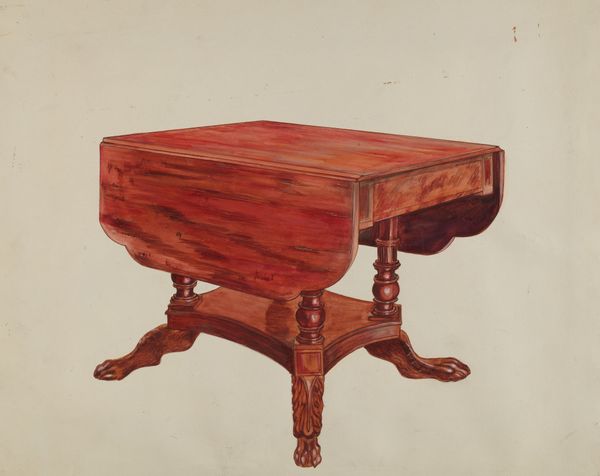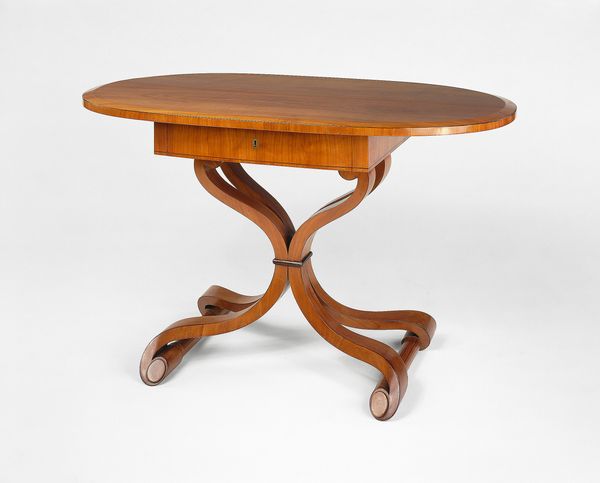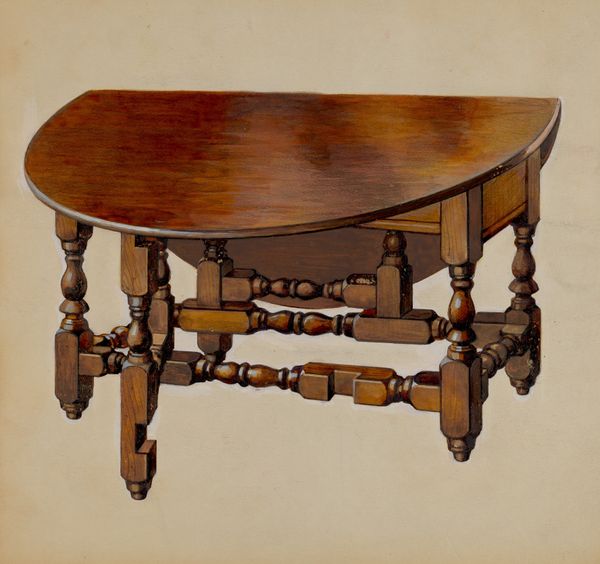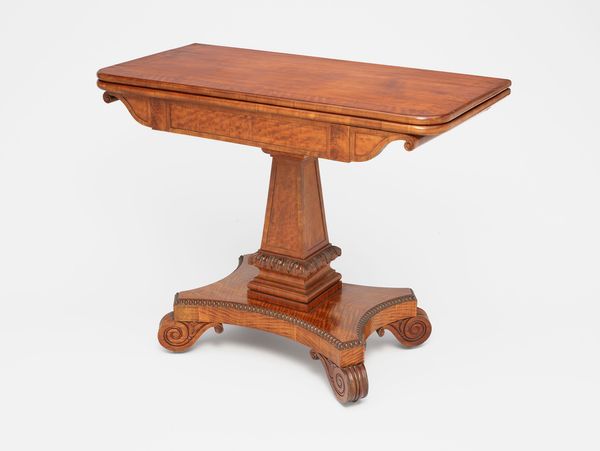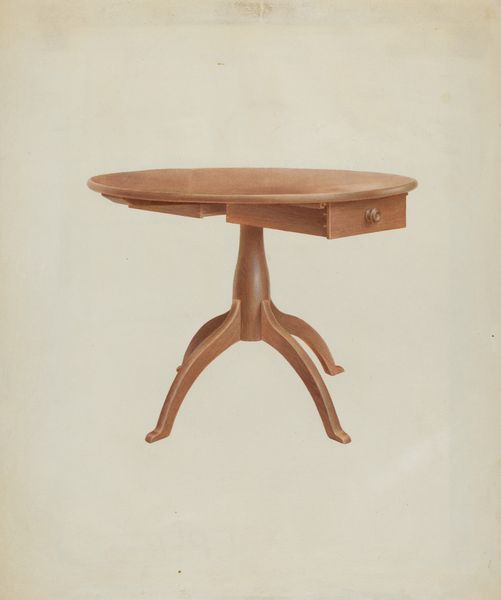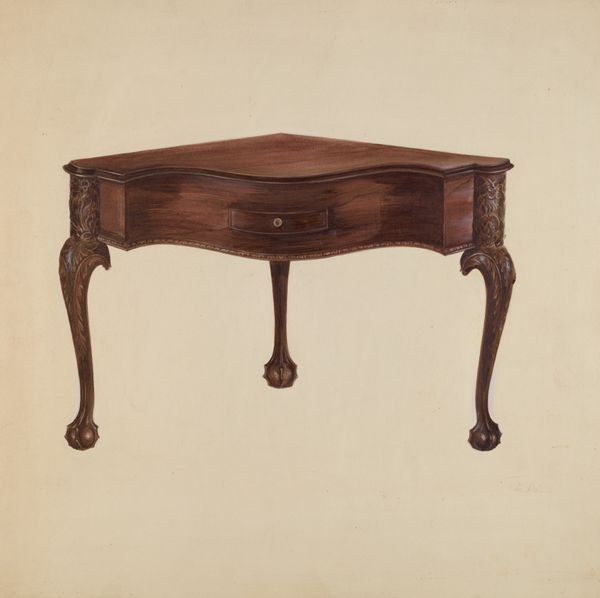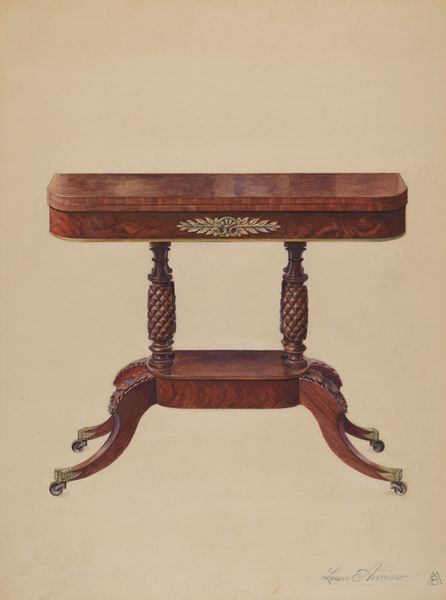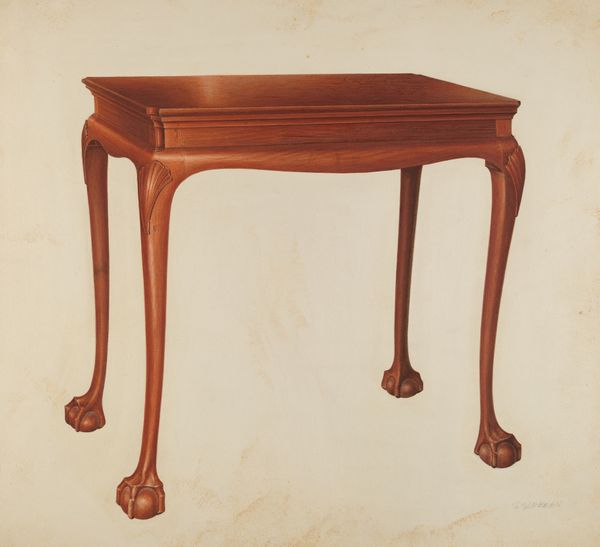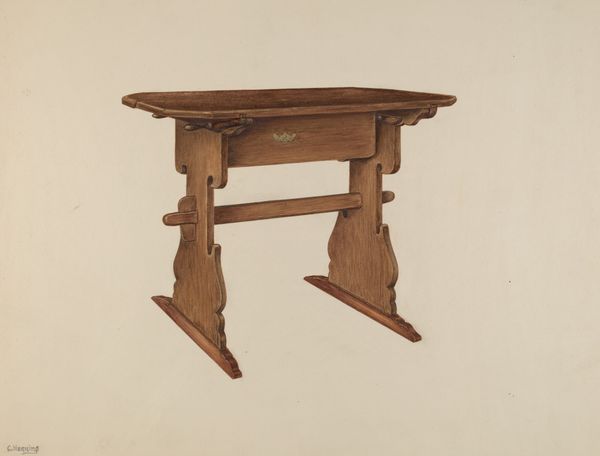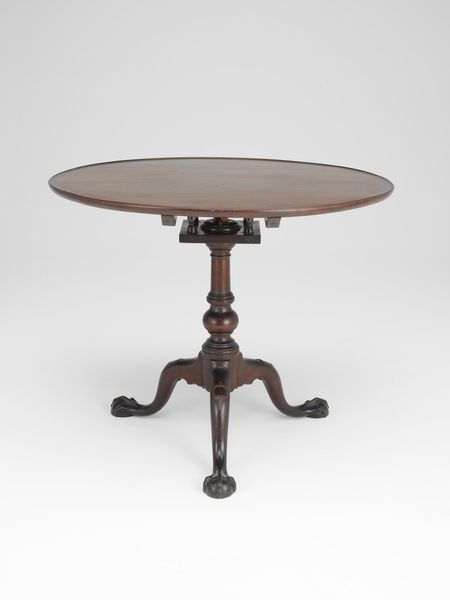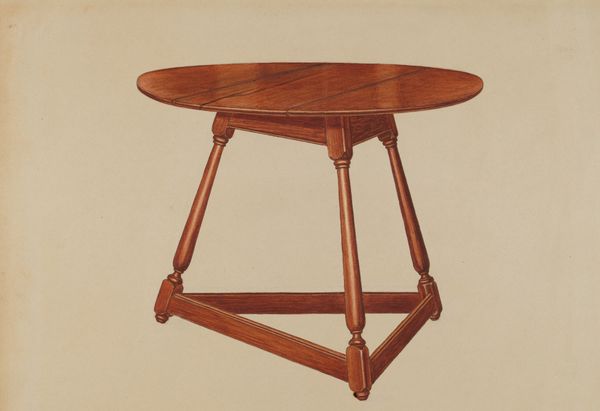
drawing, paper, watercolor
#
drawing
#
water colours
#
paper
#
watercolor
#
ceramic
#
decorative-art
#
watercolor
Dimensions: overall: 22.9 x 28 cm (9 x 11 in.) Original IAD Object: 5 1/2" wide; 2 3/4" high
Copyright: National Gallery of Art: CC0 1.0
Editor: So, here we have Ellen Duncan's "Doll Furniture - Table," created around 1937, using watercolor and drawing on paper. It's interesting how the wood grain is rendered with watercolor. What's your initial reaction to this piece? Curator: Note the strategic use of color to define form and texture. Duncan has used varied tones of brown to achieve the appearance of depth, light and shadow, the sine qua non of visual representation. It evokes the texture of wood. The details in the construction of the table’s legs, rendered in a decorative art style, create complex symmetries and asymmetrical relations across the surface of the composition. How does the artist achieve such intricate details, and what does this meticulous rendering contribute to your overall interpretation? Editor: I'm curious about the precision in the lines. It's almost technical, yet still feels artistic. How would you analyze the line work in relation to the watercolor washes? Curator: Precisely. Semiotically, each line and wash contributes to a structured system of signification. The crispness of the lines defining the table's form against the softer watercolor fills signifies an understanding of volume. The relation is one of contrast, delineating foreground from background via precision, or lack thereof. This controlled contrast of sharp lines against blended washes lends a subtle dynamism to the static subject, enhancing its representational form. Do you note the artist’s employment of light? Editor: Yes, the subtle gradient on the tabletop! It prevents the image from being flat and gives a tangible feeling. It also has affected my understanding by adding life to the piece. Curator: Indeed. The artist masterfully articulates form through value modulation. The delicate graduation from light to dark not only evokes volume but also directs the viewer's gaze. So, by creating variations across the work, we gain depth through understanding of both its parts and how they combine to function as a whole. Editor: I agree. Focusing on the construction has shown me how simple it can be to extract complex form and detail from a seemingly unassuming subject. Curator: Form truly dictates content. The artist’s careful control guides us towards understanding her vision of simple perfection.
Comments
No comments
Be the first to comment and join the conversation on the ultimate creative platform.

